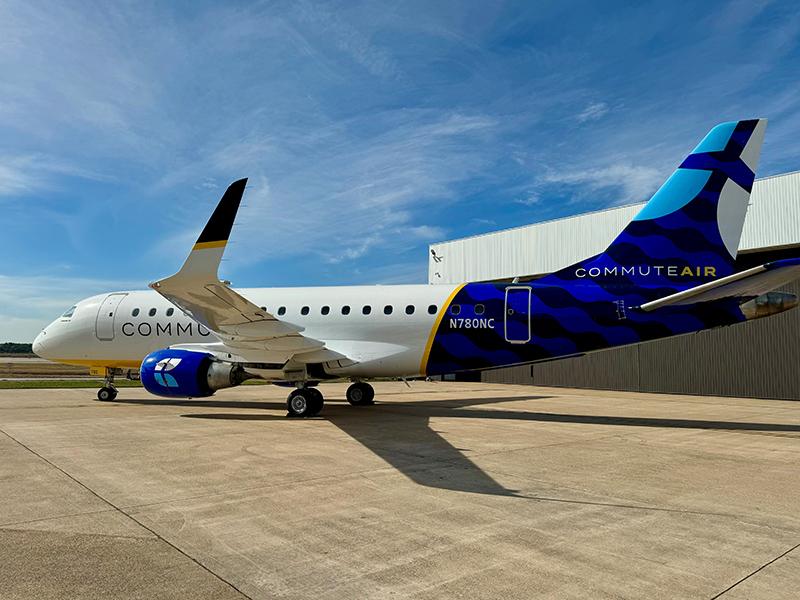
At first sight, it seems an odd decision: Why introduce a single example of a different aircraft type into your fleet, with all the potential complexities that could arise?
U.S. carrier CommuteAir believes that it is worth the effort.
Houston-based CommuteAir is a United Express operator with a fleet of more than 50 Embraer ERJ-145 50-seaters, with bases at Houston and Washington Dulles and networks radiating out from those points.
Following a 10-month certification process, it has now introduced a single 76-seat Embraer 170 to perform charter services.
“CommuteAir recognized a significant opportunity in the market for charter aircraft that bridge the gap between small regional jets and larger narrowbody aircraft,” said senior vice president of flight operations, David Fitzgerald.
“In our research prior to acquiring the aircraft, we identified a significant gap in the marketplace between smaller 50-seat regional jets available for charter and small narrowbody aircraft such as Boeing 737 or Airbus 320-series aircraft. The E170 is able to serve larger charter groups with dramatically increased aircraft range relative to the E145 aircraft we operate in scheduled service for our codeshare partner United Airlines," he said.
“We now hold a Certificate of Public Convenience and Necessity to operate the aircraft, which facilitates future growth opportunities with aircraft having larger seating capacities,” Fitzgerald added.
Fitzgerald said that CommuteAir can cope with the complexities of introducing a new aircraft type into its fleet. “We have built CommuteAir from day one to handle multiple fleet types, and revisions to our existing maintenance procedures were relatively streamlined as the E145 is also a Group II aircraft.” Group II refers to the grouping of airplanes based on wingspan or tail height.
“This has a significant impact upon the regulatory requirements for an airline to certify use of an aircraft type," Fitzgerald said. "Since both the E145 and E170 are categorized in Group II, the regulatory certification process … is streamlined, since the aircraft have substantially similar weight, wingspan and operating characteristics.”
He accepted that, “While there is additional complexity in terms of sourcing parts for an additional aircraft type, the additional capabilities of the E170 allows us to both directly address the market demand for a 76-seat dedicated charter aircraft and to facilitate future growth opportunities.”
CommuteAir’s example was purchased from lessor Nordic Aviation Capital. It was previously operated by AirNorth of Australia.
The aircraft will initially be based at Houston and is expected to be employed in flying groups such as sports teams, school or corporate entities.
Fitzgerald said that the company is already looking for more of the larger-sized aircraft. “The initial response to the announcement of aircraft certification and availability for charter has been very strong, and the indications are that demand will exceed the capabilities of a single aircraft," he said. “As such, we are working to identify additional suitable E170/E175 aircraft to add to the dedicated charter operation.”





